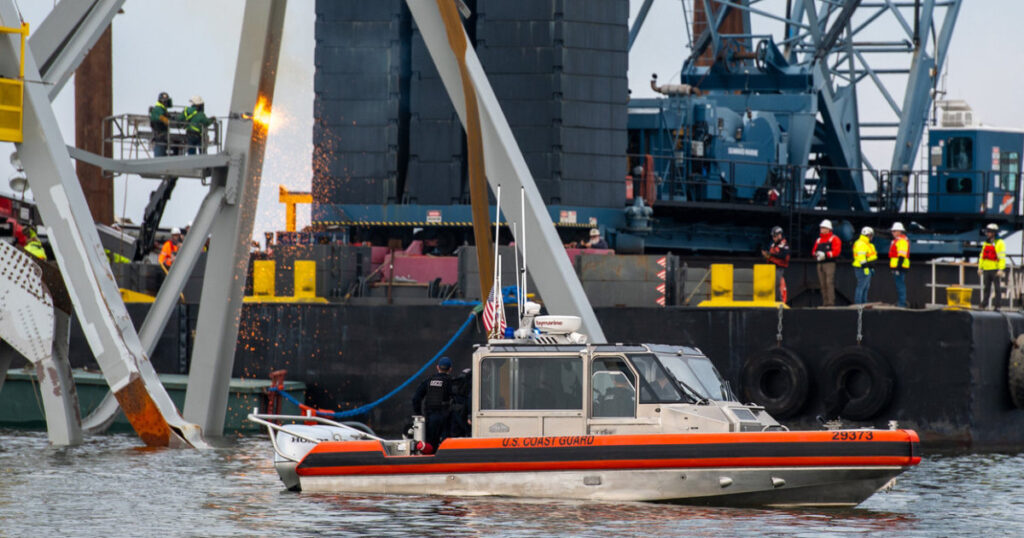BALTIMORE — Teams of engineers worked Saturday on the intricate process of cutting and lifting the first section of twisted steel from the collapsed Francis Scott Key Bridge, which crumpled into the Patapsco River this week after a massive cargo ship crashed into one of its supports.
Sparks could be seen flying from a section of bent and crumpled steel in the afternoon, and video released by officials in the evening showed demolition crews using a cutting torch to slice through the thick beams. The joint incident command said in a statement that the work was being done on the top of the north side of the collapsed structure.
Crews were carefully measuring and cutting the steel from the broken bridge before attaching straps so it can be lifted onto a barge and floated away, Coast Guard Rear Adm. Shannon Gilreath said.
Seven floating cranes — including a massive one capable of lifting 1,000 tons — 10 tugboats, nine barges, eight salvage vessels and five Coast Guard boats were on site in the water southeast of Baltimore.
Each movement affects what happens next and ultimately how long it will take to remove all the debris and reopen the ship channel and the blocked Port of Baltimore, Maryland Gov. Wes Moore said.
“I cannot stress enough how important today and the first movement of this bridge and of the wreckage is. This is going to be a remarkably complicated process,” Moore said.
Undeterred by the chilly morning weather, longtime Baltimore resident Randy Lichtenberg and others took cellphone photos or just quietly looked at the broken pieces of the bridge, which including its steel trusses weigh as much as 4,000 tons.
“I wouldn’t want to be in that water. It’s got to be cold. It’s a tough job,” Lichtenberg said from a spot on the river called Sparrows Point.
The shock of waking up Tuesday morning to video of what he called an iconic part of the Baltimore skyline falling into the water has given way to sadness.
“It never hits you that quickly….
Read the full article here





